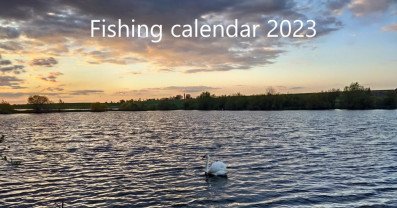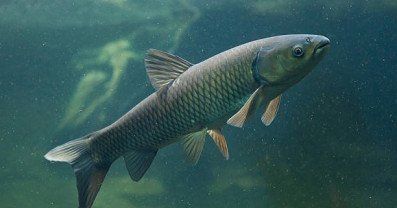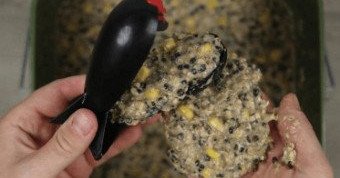Winter pike fishing - proven methods, professional approach and useful tips
There are several reasons why pike is one of the popular fish for winter fishing. Among the most basic, its size, strength of struggle and interesting methods of catching it stand out. Beginners and professional fishermen dream of catching a trophy specimen. Despite the fact that pike activity is greatest in autumn, winter is also the season of active biting, only fishermen are already changing tackle to winter gear. Therefore, winter – this is a great opportunity to start fishing for pike and other winter tackle.
Pike fishing in winter - tackle
To begin with, you should choose a fishing tackle. It can either be a spinning rod for pike fishing in winter, or a special rod for fishing with artificial baits. As a rule, these are vertical winter spinners. An effective method is fishing on the zherlytka. Thanks to the fishing for bream, you can achieve a good result using live bait.
Pike fishing on a pike
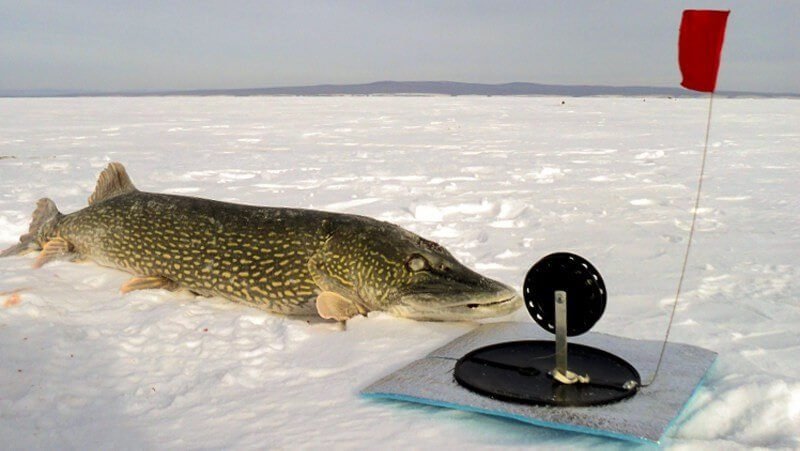
Zherlitsu – this is the so-called winter fishing platform, which is fixed on a pre-prepared hole and notifies the fisherman about a bite with the help of a signal, which is a flag, usually red or orange in color
For fishing for pike on a pike usually use about 10 tackles per person. Baits are installed at different points of the reservoir, after which the fisherman waits for a bite. But fishing for zherlyka is not as passive as it might seem at first glance. The fisherman should rearrange the fishing rods in the event of a long-term absence of a bite and look for more promising areas of the reservoir, look for an active pike and working depth. If a pike has started to take some of the baits, the other baits should be rearranged closer to the ones that are working. In general, it is optimal to place zherlyts at a distance of about 10 meters from each other, placing them along the edge or from the shore to the depth. The sockets are not located in a straight line, but as if slightly wrapped to the side — this will allow you to have a good look at each place, sitting next to the first one. If some lures have started to work, you can put several lures closer to them, reducing the distance between the tackles to 3-5 meters.
A few pike are often caught from one point, if they are not too big. Large pike will never let a relative near them, therefore, it is worth understanding that after catching a solid specimen, it is unlikely that you will be able to catch anything else at this point. But, as they say, a holy place is never empty. The place from which the big pike was caught will definitely be occupied by another spotted predator, since the big relative probably occupied a very good place, which will not be idle for a long time. Remember this point, it can bring you a good catch more than once.
Fishing for pike on a lure is quite interesting in terms of baits. The best can be singled out as follows: crucian carp, piskar, roach, roach, perch, redfin and others. It is also worth understanding that even if you bought a live fish or caught it in another reservoir, such a live fish must be in the reservoir where pike fishing takes place. If you start catching a pike on a roach, but there are no roaches in this reservoir, then the pike is unlikely to take such a live bait — this will alarm her, as she has never seen such a fish.
Winter pike fishing with a winter rod
For winter pike fishing you can use a winter rod with with a hard nod in order for it to perfectly work out the heavy weight of artificial bait or winter spinning. Winter pike spinning looks like a reduced copy of ordinary spinning. It also has pass rings and can be equipped with an inertialess coil, which is very convenient when catching a predator in winter and frequent transition between holes. But also with an inertia reel, winter spinning is often used.
The line is used from 0.2 to 0.35 mm, since a thicker version will break the game of the bait and alert the predator, and a thinner line will not withstand the resistance, even if it is weakened in winter, but still a very strong predator. The use of a leash is mandatory, otherwise the pike will easily cut the fishing line with its razor-sharp teeth. Steel or tungsten leashes are used, and some fishermen use fluorocarbon leashes for these purposes, which has a very good effect on the number of bites. Fluorocarbon also looks like fishing line, so it practically does not alert the predator. For the leash, you need to take fluorocarbon with a diameter of 0.55 mm — this is the best option, because the pike is not able to cut such a leash, and if it does happen, it is very rare and the pike should be of a very solid size.
When winter pike fishing it is necessary to drill a dozen holes in advance for a winter fishing rod in order to fish on each of them in turn. Having completed the required number of holes, it is necessary to return to the first one and start fishing from it. Try different wiring — active, slow, with high and low amplitude, with different degrees of oscillation. Try different shapes and colors of lures. If there is no bite within 10-15 minutes — move on to the next hole. If a bite has become active in one of the holes, try to continue fishing in it or return to the same spot later. Remember the places where there was a pike bite, they usually remain active all winter. A vertical spinner or balancers are mainly used to catch pike on a winter fishing rod. Both those and other baits can be very effective if you know how to present them correctly to the pike. It is advisable for the fisherman to have both spinners and balancers, because it is not known in advance which bait will be more attractive for pike today.
Winter fishing for pike on a balancer
One of the most effective baits for fishing pike in winter can be considered a balancer. A variety of shapes, sizes and colors allows you to choose the most effective bait for any conditions. And experienced fishermen have long identified balancers on pike as the best. The optimal size of the balancer on the pike — 7-9 cm. This is the golden mean, which will allow you to achieve the optimal number of pike bites and its size. In addition, balancers of this size will rarely be attacked by perch, and if they are, they will be of solid size. But, if the pike is caught on a small river, where it does not reach large sizes, then a balancer measuring 5-6 cm will be optimal. The color of the balancer should be selected based on the fishing conditions and mood of the pike. So, when fishing at a great depth or in cloudy water, when visibility is worse, balancers of acid colors show a very good result. In clear water, on the contrary, a pike will most likely be attracted to a balancer of natural color, i.e. with coloring to resemble a real fish.
Some balancers work better on pike, others worse. Among the great variety of such charms, it is very difficult to choose the best one. But there are manufacturers where almost every model turns out to be a very catchy masterpiece. So, if you are afraid to make a mistake with the choice of the first balancers, do not spare money on baits of such manufacturers as: Rapala, Nils Master, Lucky John. Other manufacturers also produce good baits, but according to "working" models of the listed companies are not comparable. Try to start with these, and then, as you gain experience, you will be able to create your own collection of catchy pike balancers of the most diverse shapes, colors and manufacturers.
Fishing for pike in winter on a spinner
Another lure for winter pike fishing has a spinner. A big advantage of spinners is their affordable cost, which is usually an order of magnitude lower than the price of a balancer. but, nevertheless, the effectiveness of winter spinners in skillful hands is no worse than a balancer. High-quality spinners, reliable tees and a refined bait game will be the key to your success. Before you go fishing, study the game of existing spinners in the bathroom or at least in a bucket. Look how she deviates to the side, how much time she needs to stop after jerking the brush. Do not forget that the basis of playing bait is a pause. The pike attacks the spinner precisely during pauses in the game, so experiment with the duration of the pauses. The more active the pike, the shorter the pauses and vice versa, the more passive the pike, the longer the pauses in the bait game.
Where to look for pike in winter
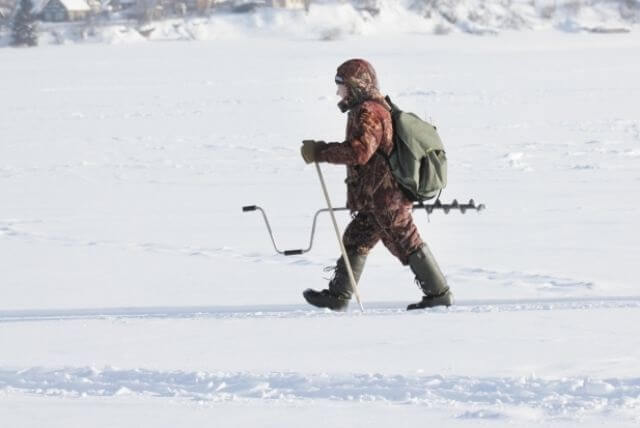
It is very, very important to learn to identify promising places for winter pike fishing. The fishing period is of great importance in this case. Thus, after the first ice, in December, the pike often remains in the same places where it was before the reservoir was covered with ice. And these can be areas in coastal vegetation, near steep shores and in other areas with places for shelter at a shallow depth. The pike chooses the same places on the last ice. When the period of the first ice comes to an end and begins to smoothly transition into the period of dead winter, the pike begins to move deeper, descend into the wintering pits, where all the peaceful fish went. Although a large pike, which can be considered an individual weighing more than 4-5 kg, by and large never leaves these pits. In general, when choosing a place for pike fishing in winter, you should choose the following places:
depth differences, underwater steps;
thickets of vegetation;
root trees, flooded bushes or trees;
all kinds of underwater and surface structures (bridges, dams, etc.) n.);
on rivers, the pike often stands in bays, near steep banks, in bends of the riverbed, in the confluence of rivers and streams, in the middle of banks.
In winter, pike behavior is often determined by the weather. So, for example, when atmospheric pressure increases, the pike tries to stick to deeper places, and when it decreases, it prefers shallower areas. Catching a pike in the dead of winter is most likely in such places of the reservoir, where there is an additional source of oxygen, which the predator lacks in such periods. The less the pike feels the lack of oxygen, the more active it will be. And the highest oxygen content in water in winter will be in the following places:
at the border of a calm current with a fast one;
in places confluence of streams and rivers;
in places where springs come from the bottom.
By the last ice, when the ice and snow begin to melt, the pike begins to come closer to the shore and can occupy fairly shallow areas. At this time, the pike's main food is also sent here - white fish and last year's young, which by this period are already one-year-old and have just reached a size that is pleasing to the predator. Now the pike can feed very actively, which means that it will react well to baits.
The best time for winter pike fishing
Pike is caught throughout the winter, starting from the very beginning of ice formation and until the last moment of his disappearance. But, of course, pike will be most active on the first and last ice. In the dead of winter, there will be days when the pike, although lethargic, will take, and there will be days when there will be no bites at all. But if a thaw suddenly occurs in the middle of winter, then fishermen have an excellent opportunity to catch a very productive pike from the ice. A thaw always entails an active bite of a toothy predator. Also, when going fishing, you need to pay attention to the weather. So, for example, a pike behaves much more actively on cloudy days, especially if there is calm on the reservoir. And on clear days in windy weather, her bite is unstable or completely absent. 
Atmospheric pressure is one of the most important weather factors that can determine the result of fishing. Stable pressure is favorable for any fish, when the pressure stays at the same level for at least 3 days, the fish feels very comfortable, which means that there is no reason for a bad bite. A gradual increase in pressure will also be positive for a predator, when the atmospheric pressure rises by 1-2 points within a few days. A sharp jump in pressure in any direction will have a negative impact on the pike's bite. Also, a good indicator of pike activity is often whitefish activity. If a peaceful fish shows good activity, it means that the predator is not too active these days. Conversely, if a white fish refuses to bite, it means that the probability of good activity of the predator increases. Depending on the time of day, pike can be actively caught all daylight, starting at dawn and finishing feeding at sunset. Moreover, the peak of activity can occur at any time, including at lunchtime. In winter, it can be active throughout the day. Therefore, a pike bite at noon in winter is quite a common phenomenon, because it is the warmest time of the day. At night, the pike stops biting. Winter pike fishing - is a whole science, all the nuances of which are difficult to include in one article. But we tried to reveal to you the basic concepts that will definitely help in winter hunting of a predator. If you have any questions or additions, leave them in the comments to this article.

